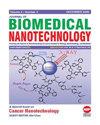miR-146a-Modified Lung Fibroblast Attenuates Transforming Growth Factor Beta-Induced Fibrosis Progress via Downregulation of Early Growth Response Factor 1
IF 2.9
4区 医学
Q1 Medicine
引用次数: 0
Abstract
This study investigated the role of miR-146a in lung fibrosis, specifically focusing on idiopathic pulmonary fibrosis (IPF), which is characterized by excessive alveolar fibrosis and collagen synthesis. The study aimed to explore the impact and mechanism of miR-146a on lung fibrosis using in vitro methods. Human lung fibroblasts (LFs) were transfected with miR-146a mimics and inhibitors to examine their effects. Transforming growth factor-β (TGF-β) was used to activate LFs for 24 hours, while phosphate-buffered saline (PBS)-treated cells served as the control group. The transfection efficiency, level of LFs activation, collagen expression, and cell viability were investigated. The results demonstrated that administration of miR-146a mimics attenuated LFs activation and reduced collagen levels by inhibiting the expression of EGR1, an important factor involved in cell proliferation and differentiation that is positively associated with fibrogenesis. On the other hand, miR-146a inhibitor increased EGR1 expression, but did not significantly affect LFs activation and collagen expression. Furthermore, rescuing EGR1 expression reversed the decrease in LFs activation and collagen expression induced by increased levels of miR-146a. These findings indicate that miR-146a overexpression has an anti-fibrotic effect on LFs by inhibiting EGR1 expression, thereby restraining cell activation and reducing collagen deposition. Therefore, miR-146a holds promise as a potential therapeutic target for mitigating lung fibrosis diseases.miR-146a修饰的肺成纤维细胞通过下调早期生长应答因子1抑制转化生长因子β诱导的纤维化进程
本研究探讨了miR-146a在肺纤维化中的作用,特别关注特发性肺纤维化(IPF),其特征是肺泡过度纤维化和胶原合成。本研究旨在通过体外方法探讨miR-146a对肺纤维化的影响及其机制。用miR-146a模拟物和抑制剂转染人肺成纤维细胞(LFs)以检测其作用。用转化生长因子-β (TGF-β)激活LFs 24小时,用磷酸盐缓冲盐水(PBS)处理的细胞作为对照组。观察转染效率、LFs活化水平、胶原表达和细胞活力。结果表明,miR-146a通过抑制EGR1的表达来模拟LFs的活化和胶原水平的降低,EGR1是参与细胞增殖和分化的重要因子,与纤维形成呈正相关。另一方面,miR-146a抑制剂增加了EGR1的表达,但对LFs的激活和胶原蛋白的表达没有显著影响。此外,挽救EGR1表达逆转了miR-146a水平升高引起的LFs激活和胶原表达的下降。这些发现表明,miR-146a过表达通过抑制EGR1表达,从而抑制细胞活化,减少胶原沉积,从而对LFs具有抗纤维化作用。因此,miR-146a有望成为减轻肺纤维化疾病的潜在治疗靶点。
本文章由计算机程序翻译,如有差异,请以英文原文为准。
求助全文
约1分钟内获得全文
求助全文
来源期刊
CiteScore
4.30
自引率
17.20%
发文量
145
审稿时长
2.3 months
期刊介绍:
Information not localized

 求助内容:
求助内容: 应助结果提醒方式:
应助结果提醒方式:


